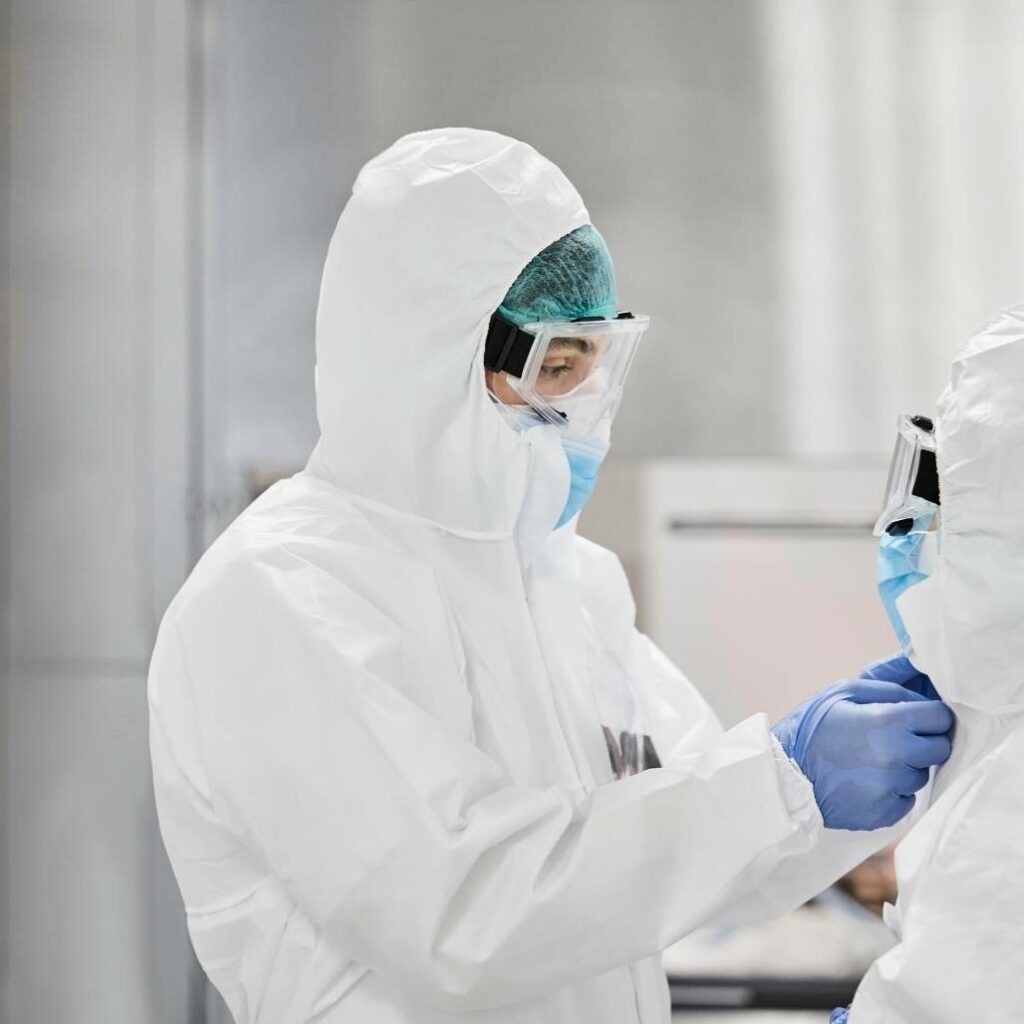7 Ways to Reduce Contamination in Cleanrooms
Published by Harmony Lab & Safety Supplies on Jan 09, 2024

A cleanroom bears its name for a reason: its purpose is to stay sanitary and free of contaminants to maintain a stable work environment. Because employees handle sensitive equipment and components in these critical areas, keeping contaminants at bay is essential to everyday workflow and maintaining profitability.
It may come as no surprise that your employees are the most common source of contamination in your cleanrooms. What you may find surprising are the simple steps to minimize contamination risks. Let’s take a look at some of the most effective tips below.
1. Practice Good Hygiene In Cleanrooms
Humans naturally produce particles. Our bodies shed contaminants, delivering detritus-like skin flakes and particles from hair products, cosmetics, and lotions. Even perfume and cologne, for instance, can produce pollutants. Thus, while good hygiene can limit the contaminants spread in the cleanroom, it’s also important to consider how specific steps of getting ready might be skipped or altered to limit pollutants. Since 75-80% of particles found in cleanroom inspections are made by personnel, it’s a good idea to establish a set of hygiene recommendations for your employees to follow.
2. Be Especially Mindful of Abrasion and Cut Hazards in Cleanrooms
A good portion of cleanliness violations result from bare hands touching surfaces, then transferring these particles onto garments before they enter the cleanroom.
To make sure your employees aren’t contaminating anything that will be worn inside your critical environments, consider installing no-touch sensors in the areas where your employees don their cleanroom gear. This will allow them to still wash their hands without picking up any excess particles.
Cleanroom Gloves are used in areas with specific requirements for low contamination risk. Minimize sub-micron particle contamination by using gloves designed and manufactured for cleanrooms.
3. Wear Cleanroom Apparel Properly
Cleanroom apparel should be donned from top to bottom to eliminate cleanroom contamination. How your employees wear their disposable clothing is as important as the garments themselves.
Because particles are also impacted by the pull of gravity, donning procedures should start at the top. Employees can then work their way down.
While each company’s donning processes may be unique to its specific needs, it’s a good idea to adopt a head-to-toe approach to prevent contaminants from falling and settling on cleanroom shoe covers
4. Limit Speaking in Controlled Environments
A quiet cleanroom doesn’t just boost productivity; it also has the power to reduce contaminants. Consider that loud speaking of just 100 words (less than a minute of normal conversation!) can produce up to 250 saliva particles.
Of course, some contaminants, such as coughs and sneezes, may not be avoided, which produce roughly 5,000 and 1,000,000 saliva particles, respectively. What’s a simple way to limit contamination from saliva particles in your cleanroom? Wear a face mask designed for Cleanrooms.
5. Designate “Cleanroom Only” Supplies
Taking a pen from outside the cleanroom into the critical work environment might seem harmless. Still, employees who do so will also unintentionally bring a plethora of contaminants inside with it.
Not only should you have cleanroom pens, notebooks, and other tools or instruments designated specifically for cleanroom use, but you should also ensure they comply with your standards. In other words, your supplies should also have been produced in a clean room environment.
For instance, keep your area clean of paper contaminants using documentation designed just for Cleanrooms. Cleanroom paper packaged in class 10 cleanrooms is considered safe for use in class 10 cleanrooms or higher. Cleanroom paper products are impregnated and coated with a polymer. This keeps the paper from generating tiny particulates when written on.
6. Take Care When Entering and Exiting Cleanrooms
After employees enter and exit cleanrooms, encourage them to take an extra moment to ensure doors are tightly shut. It’s a good practice to close the changing room door before the cleanroom door is opened to prevent additional particles from making their way into the buffer area.
In fact, you can further eliminate the spread of contaminants by separating your gowning room into three distinct regions. One is for the non-sterile space directly outside the room, where employees can keep personal items and clean shoes.
The second space is the sterile “dirty” area, where employees prepare for gowning. Finally, the last space should be designated for gowning and taking final preparations before entering.
7. Move Mindfully in Cleanrooms
The more rapid movement occurs inside the cleanroom, the more particles will be removed. To combat excess contamination, employees should move slowly and deliberately as they approach workstations. They should also be encouraged to enter and exit cleanrooms slowly.
By incorporating these tips into your cleanroom protocol, you might be able to significantly reduce the number of contaminants inside. You can find cleanroom documentation, disposable cleanroom apparel, and more supplies suitable for cleanroom use online through Harmony Lab & Safety Supplies. If there’s a specific item you need help with, a product specialist will be happy to assist you.